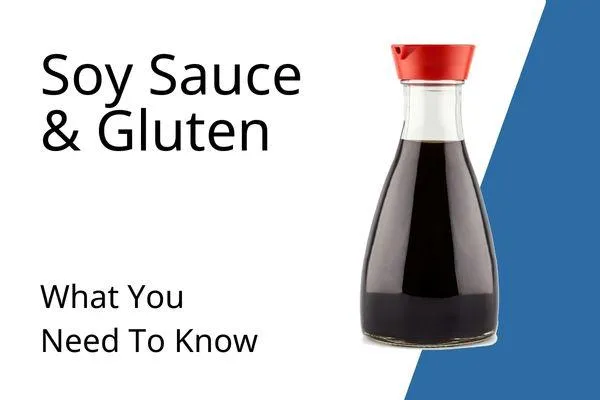International Gluten Free Education & Awareness
Gluten Free Knowledge

Soy Sauce & Gluten
Soy (soya) sauce is one of the world’s oldest condiments and has been in use for many years and is generally considered off limits on the gluten-free diet.
Despite its name, almost all varieties of soy sauce contain wheat. More often than not, it is listed as the very first ingredient on the bottle. This makes dining in establishments that use soy sauce a risk for individuals with gluten sensitivities.
Types of Soy Sauce
Naturally brewed soy sauce is prepared by fermenting a mixture of mashed soybeans, salt, wheat and water. The wheat is primarily used in soy sauce in equal parts with the soybeans and is pulverized to give it taste and consistency.
Hydrolyzed soy sauce is made with defatted soy meal, the residue of soybean oil production. It is broken down (hydrolyzed) into amino acids and sugars with concentrated hydrochloric acid. This caustic mixture is then neutralized with alkaline sodium carbonate, and flavored and colored with corn syrup, caramel, water, and salt.
Currently there is not a reliable testing method to determine the amount of gluten remaining
Soy Sauce Controversy
It is controversial if the fermentation process breaks down all of the gluten protein in soy sauce. Some small studies indicate it falls well below the 20ppm and is safe. While some people with celiac disease report not being bothered by it, may others have a reaction when it is ingested.
Hydrolyzed soy sauce has not been adequately tested for gluten and should be avoided.
It is important to note that soy sauce that has not been labeled gluten free will likely contain wheat content. Others may contain barley which still has gluten in it. In many non-brewed varieties, the inclusion of wheat has now been removed.
Soy Sauce is NOT Considered Safe for a Gluten Free Diet
Even if naturally brewed soya sauce tests below the 20ppm it is difficult to be certain which if the fermented version or the hydrolyzed version is used in a restaurant or hawker stand.
Until further testing is done and a clear labeling standard can be set for Singapore, soy sauce is considered a gluten containing food and is off limits on a gluten-free diet.
Gluten Free Substitute for Soy Sauce
While most commercial soy sauces contain wheat, there are some well-known brands that certify their products as gluten-free. Brand names like Kikkoman and San-J have a gluten free version of soy sauce that offers the same rich, savory taste as their regular soy sauce. It is brewed with four basic ingredients including soybeans, water, salt and rice and replaces wheat content by using rice instead.
References
Celiac. com: Is Soy Sauce Gluten Free?
Take a look around, there is so much to learn!
Gluten Free Resources
Parenting Gluten Free Children
Newsletter
Would you like to receive occasional gluten-free news and tips?
By providing my email address, I agree to receive communication from International Gluten Free.






